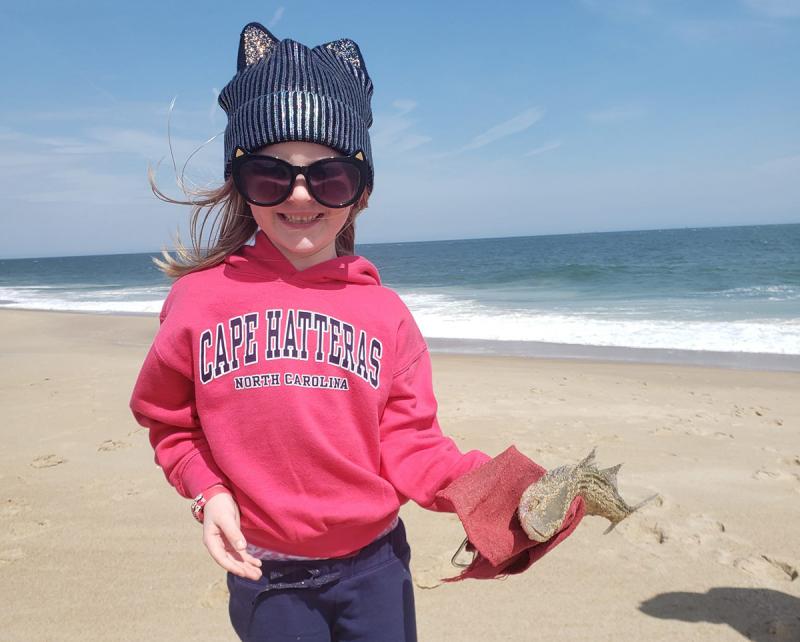Good news and bad news for fishing and hunting regs
During the Lurefest event at the Bowers Beach Fire House March 30, Dave Saveikis, director of Delaware’s Division of Fish and Wildlife, held an hourlong public session where he presented the latest information on fishing and hunting regulations for the 2019 season.
First the good news. The summer flounder and black sea bass fishing seasons will remain the same for 2019. Flounder will be open all year with a four-fish bag limit and a 16.5-inch minimum size. Black sea bass season will open Wednesday, May 15, with a 15-fish bag limit and a 12.5-inch minimum size.
As we had mentioned in an earlier report, cobia will now be managed by the Atlantic States Marine Fisheries Commission. Delaware will propose its regulations and hold public hearings at a future date.
Rockfish (striped bass) regulations remain up in the air until the ASMFC meeting in May. Expect some major changes.
On the wildlife side, the 2018-19 deer season resulted in the harvest of 14,883 deer. Over half of those animals were taken during the fall shotgun season. This was a six-year low in spite of the addition of 23 Sundays.
Other bad news was the fact that Canada geese have suffered a very poor nesting season. The 2019-20 season will be 30 days with only one goose per day.
Mallard ducks have had the same poor reproduction and their population is also crashing. As a result, hunters will only be allowed two mallards per day and only one may be a hen.
There will be a very limited season on tundra swans. It will be by permit only, and only 84 permits will be issued by lottery. It seems the swans have become a problem to farmers who see the birds destroying their crops.
A very long time ago, a gentleman in my goose pit accidentally killed a swan that was flying with a flock of snow geese. We hid the bird in a tangle of marsh grass, and by the following week the only remains were feathers.
Winter flounder
Last Friday, I decided to test my idea that winter flounder had returned to Delaware. My friends in New Jersey had been catching them again for a few years, so I figured what the heck, maybe they were back in Delaware.
In the 1960s, Bobby Woods and I would fish from shore at Massey’s Landing and catch the occasional winter flounder. We did much better once we started renting wood boats with tiny outboards from the northside so we could fish more productive waters.
I picked up a dozen bloodworms at Rick’s Bait and Tackle on Long Neck Road and arrived at Massey’s during the last of the outgoing current. I set up at the south end of the fishing pier, and before baiting up, I worked a small white shad in the eddies around the pier pilings. No takers.
I rigged one rod with a single Chestertown hook and a small spinner blade. This hook saw a bloodworm threaded on right up to the eye. A one-ounce sinker held bottom in the mud close to shore. The second outfit saw a two-hook top-bottom rig with bloodworms on both hooks. This one received a two-ounce sinker and was cast to where the current met the slack water.
I fished the better part of four hours, changing my bait every 15 minutes or so. The current was running out when I arrived and in when I left. To the best of my knowledge, I never had a bite and the only thing I reeled in was a horseshoe crab. A few other anglers came and went while I was there, and if they caught anything, I failed to see it.
If there are winter flounder back in Delaware, they have eluded me.
Virginia flounder
I know quite a few Delaware anglers travel down to Virginia for the spring flounder action, and it has started. I received several reports over the weekend with photos showing nice-sized fish taken behind the Barrier Islands.
In my experience, conditions have to be just right for the early run flounder to bite. The water has to be clean and warm, which usually means an outgoing current on a warm, sunny day. The best action is usually farther up the sloughs and creeks on the shallow mud flats where the water is warmer than in the deeper channels.
What little I know about flounder fishing behind the Barrier Islands of Virginia I learned from Bob Baker. He is the best I have ever seen and works hard at catching fish. He is never satisfied and will keep changing depths, baits and drifts until he finds what the fish like. Be like Bob.




















































